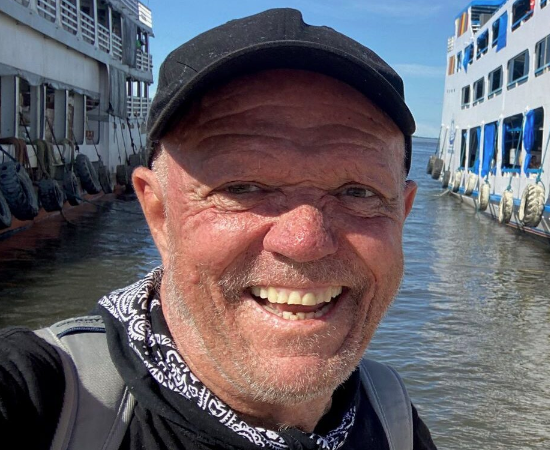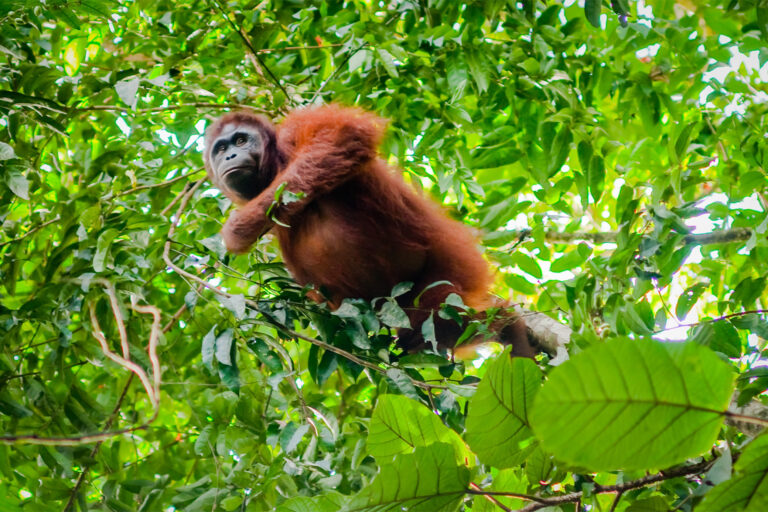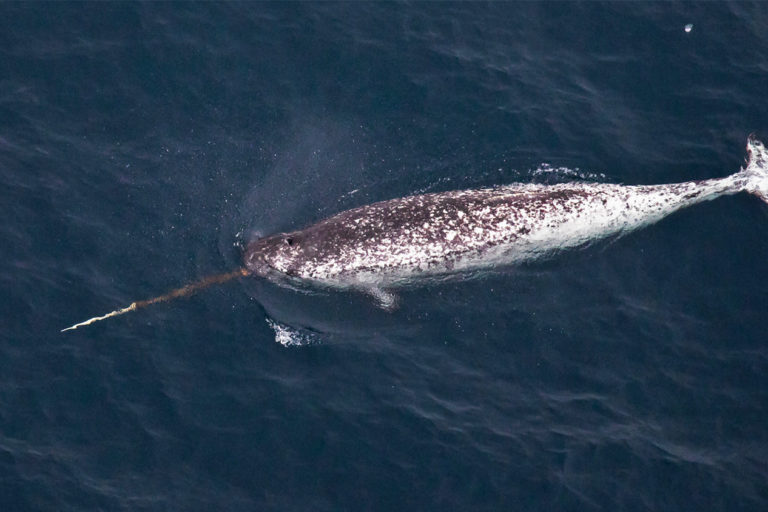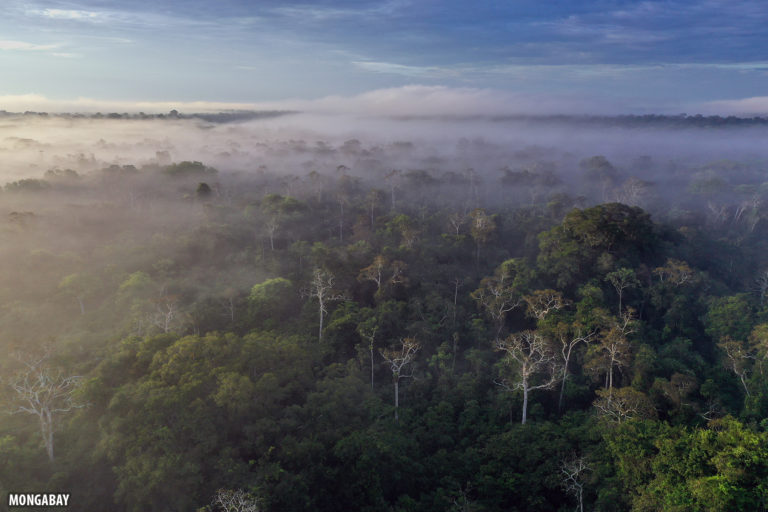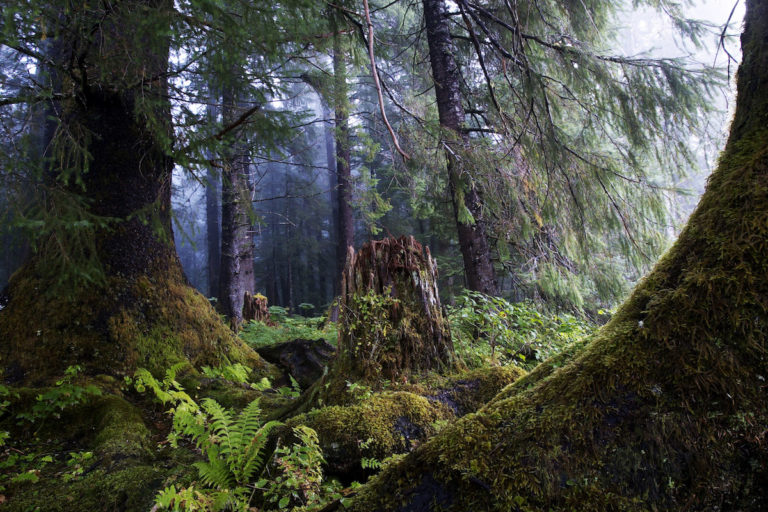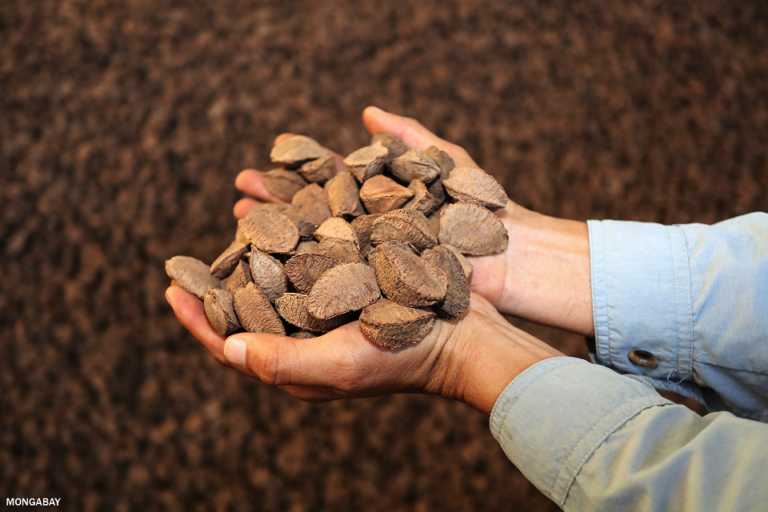- Despite agreement on the importance of protecting the Amazon’s biodiversity, most people in the Pan Amazon depend directly or indirectly on conventional development and extractive production models.
- Investments by the extractive sector in the mid-nineteenth century were more successful because they were organized by multinational corporations with experience in managing operations in remote geographies (Peru, Ecuador, Bolivia, Guyana, Suriname) or by state-owned corporations with practical knowledge of their own country (Brazil, Venezuela).
- In Brazil, some family enterprises evolved into complex holding companies that now finance expansion via joint ventures and international credit markets. A select few have chosen to raise capital by selling equity shares on domestic or international stock markets, although they typically retain majority control to maintain the family legacy.
The constituency for the conservation of the Pan Amazon is broad-based and diverse. Academics and civil society organizations have been successful in framing conservation of the Amazon as an issue of global importance. They have formed an alliance with Indigenous and traditional peoples, and have convinced a majority of urban populations that the Amazonian ecosystem is a natural asset that will benefit future generations. Most citizens of the region’s subnational jurisdictions also support the principles of sustainable development and generally accept the consensus view of the need to conserve the region’s biodiversity and ecosystem services.
Nonetheless, this generalized support has not translated into a change in the production systems that are driving deforestation and other forms of environmental degradation. This apparent contradiction is the logical result of people’s economic dependence on conventional development. Most citizens of the Pan Amazon depend either directly or indirectly on extractive production models and the economic growth that occurs when natural capital is converted into financial capital.
Advocates for conventional development likewise originate from a similarly broad and diverse populace, but this view is particularly strong in communities composed of recent immigrants and their descendants who live on or near the agricultural frontier. They include obvious stakeholders, such as farmers, ranchers and miners, but also their employees, service providers and supply chain intermediaries. Proponents of orthodox development occupy key positions in the conventional economy and consequently have an outsized influence on decisions that drive investment. This group includes the executives of banks, construction companies, manufacturing enterprises and multinational energy corporations that are key intermediaries in the conversion of natural capital to financial capital.

Expansion of family corporations
Corporations have been present in the Amazon since the eighteenth century, when the Duke of Pombal used a charter company to manage the recently confiscated assets of the Jesuits. In the late nineteenth century, sophisticated investors from London and New York speculated in land deals and rubber concessions in an early manifestation of a globalized economy. These ventures were followed by projects conceived by eccentric visionaries, such as Henry and Edsel Ford and Daniel Ludwig, whose investments in plantation forestry failed because they did not understand tropical ecology or the social dynamics of mid-century Amazonia.
Investments by the extractive sector in the mid-nineteenth century were more successful because they were organized by multinational corporations with experience in managing operations in remote geographies (Peru, Ecuador, Bolivia, Guyana, Suriname) or by state-owned corporations with practical knowledge of their own country (Brazil, Venezuela). These ventures have a legacy of multiple environmental and social impacts and have garnered public interest and galvanized the ire of environmental and social advocates. Private domestic corporations have also exerted significant influence but operate with only a fraction of public oversight. Their activities are often difficult to track, particularly companies that are not publicly traded on domestic stock exchanges and therefore do not publish financial statements that detail their assets and liabilities.
Some of the most influential Brazilian companies have evolved from family enterprises that flourished thanks to the vision and hard work of an exceptionally gifted individual. Success in one field led to the accumulation of financial capital that was deployed to expand and diversify operations. Some evolved into complex holding companies that now finance expansion via joint ventures and international credit markets. A select few have chosen to raise capital by selling equity shares on domestic or international stock markets, although they typically retain majority control to maintain the family legacy. Family corporations are bottom-up success stories and, unsurprisingly, tend to enjoy considerable local and regional support.
Family companies born in Brazil’s Legal Amazon have shared the business domain with corporations established in the political and financial centers of São Paulo and Rio de Janeiro. Their involvement was subsidized by the federal government via the Superintendência do Desenvolvimento da Amazônia (SUDAM), which actively recruited the largest financial and manufacturing firms as part of a national strategy to develop the Amazon. SUDAM is a quasi-autonomous agency with three major objectives: (a) ensure the occupation of the Amazon by Brazilians; (b) create an economically stable and progressive society; and (c) integrate the Amazon into the larger Brazilian economy. SUDAM has coordinated most of its investments with the Banco da Amazônia, which evolved from an agency created to support the rubber industry during World War II.
Although the original justification for mass colonization of the Amazon was, in part, to provide land to the rural poor, there was always a policy component to provide corporations access to public lands. This became manifest in 1975, when the government changed colonization strategies to prioritize the distribution of large land holdings to companies and wealthy individuals. The change in policy was managed via SUDAM, which legitimized hundreds of livestock operations ranging in size from a thousand to several hundred thousand hectares. Most were fundamentally unprofitable and would never have existed without the incentives, particularly tax credits, from SUDAM.

Following a corruption scandal in 2001, President Fernando Henrique Cardoso (1995–2003) converted SUDAM into the Agência de Desenvolvimento da Amazônia (ADA), which was downsized and reorganized to focus on ‘Regional Development Plans’, and tax incentives were restructured to rationalize support for the private sector. SUDAM was resurrected by the first administration of President Lula da Silva (2003–2011) but, rather than responding to a national or regional development strategy, the agency now executes projects embedded in the national budget by individual members of Congress.
A large share of the original corporate land grants supported by SUDAM were located between the Araguaia and Xingu rivers in southeastern Pará and northeastern Mato Grosso. Perhaps the most notorious was the Fazenda Suiá-Miçu (695,000 hectares), which was purchased by Ariosto da Riva from the state of Mato Grosso for 20 million cruzeiros (approximately US$ 150,000) in 1960. An audacious entrepreneur specializing in private colonization projects, Riva enlisted the Grupo Ometto (now COSAN) as a partner in a speculative land scheme near São Felix de Araguaia. In 1971, the fazenda was sold to Liquifarm Agropeucuaria Suiá-Miçu Ltd, a subsidiary of the Italian national petroleum company, Azienda Generale Italiana Petroli (AGIP, now ENI).
Problematically, the Fazenda Suiá-Miçu coincided with the ancestral territory of the Xavante people, who contested the incursion, first by force, later by subterfuge and finally by civil protest. In 1966, between 200 and 300 individuals were forcibly removed by the Brazilian military to a distant locality that exposed them to migrant populations. At least 80 died from measles. The Xavante continued to resist, however, and as the Indigenous movement crystallized in the late 1980s, they claimed 250,000 hectares of their ancestral homeland within the fazenda.
The ensuing public relations debacle eventually motivated AGIP to return the land to the Brazilian state during the Earth Summit at Rio de Janeiro in 1992, with the express goal of facilitating creation of the proposed Indigenous reserve. The local bosses of the fazenda disagreed with the change in status, however and, in collaboration with local politicians, proceeded to dismember the property. Some sections were sold to large-scale ranchers, but the move also provoked a land rush by small-scale farmers. The Tierra Indígena Marãiwatsédé was formally established in 1998, but the area was already heavily deforested and fully compromised by both large and small-scale landholders.
Another ill-fated corporate investment was pursued by Volkswagen AG, whose Brazilian managers convinced its Supervisory Board in 1972 to invest in the Fazenda Vale do Rio Cristalino, a 140,000-hectare estate in the municipality of Santana de Araguaia (Pará). The goal was to create a showcase for modern technology and management practises, while demonstrating support for the military government’s development agenda. Instead, it embroiled the company in multiple scandals as environmental and social advocates denounced the German company for industrial-scale deforestation and abhorrent labor practices.
Volkswagen defended itself by arguing that land clearing was necessary for the production of a strategic food commodity (beef), while claiming that the ranch treated its employees better than any other company in the region. Investigative reporters revealed, however, that the company used external contractors who enticed workers from a labor pool composed of unemployed migrants, mainly Nordestinos, who were confined to remote campsites while being charged exorbitant fees for transportation, room and board. The scandal motivated Volkswagen to exit the investment in 1986, but it did not completely divest itself of all related financial assets until 1998. Legal issues were resurrected in 2017, when public prosecutors opened a civil case based on the decades-old charges of slave labor. As of March 2024, the case was unresolved.

The Volkswagen scandal revealed an open secret: free land, an exploitative labor system and generous tax credits created a rural economy extraordinarily favorable for large-scale enterprises. Although international corporations were unable to navigate the pitfalls of Amazonian property development, domestic companies feasted on the once-in-a-century opportunity. The largest estates were (and remain) timber properties acquired via the land law rather than the concessionaire system managed by federal and state agencies. Next in size are mega ranches, where the company would first monetize its timber resources, then clear land to plant pastures and raise beef; many now grow soy.
The largest landholdings in Brazil are a legacy of this period. Some are still owned by the founding families (Grupo Roncador, Brascomp Compensados, Martins Agropecuária, and Grupo Triângulo), while others have been acquired by private equity companies based in São Paulo and Rio de Janeiro (Grupo Jari, AgroSB, Grupo Umuaruma, and Grupo Algar). More significant are the thousands of family-owned corporations that acquired relatively large landholdings (1,000 to 20,000 hectares) that form the foundation of the rural economy in Mato Grosso, Maranhão, Tocantins and Pará.
The corporate land rush contributed to social resentment that drove violent confrontations between rural workers and private security services, referred to as Jagunços, which have been repeatedly accused of human rights violations. Conflict was particularly acute in southeast Pará, where large- and small-scale farmers live side by side on a shared landscape (Figure 6.11). The inherent volatility has motivated the government to expropriate 91 landholdings to create INCRA-sponsored settlement projects that span more than 475,000 hectares, providing some 11,000 families an opportunity to acquire a small farm legally.
Corporate investments in palm oil began in the 1970s, when one of Brazil’s largest family-owned investment groups, Banco Real (later Conglomerado Alfa), established Agropalma, which by 2023 was operating 39,000 hectares of oil palm in northeastern Pará. Approximately half of those plantations were established via the direct deforestation of primary forest in the 1980s. The company embraced the concept of sustainability in the late 1990s, however, partly to target European markets willing to pay a premium for deforestation-free palm oil. Despite its efforts to improve its reputation, Agropalma has been embroiled in a series of scandals related to the release of liquid waste into rivers and accusations of land grabbing. The company has been accused of purchasing landholdings fraudulently obtained from Quilombola communities without adequate due diligence as to the provenance of land titles.
Corporate palm oil doubled in area in the 2000s, when both Petrobras and Vale created subsidiaries to produce palm oil as a biofuel feedstock. Both efforts failed as business ventures, but their plantations, all of which had been established on previously deforested land, were eventually acquired by Brasil BioFuels (BBF). That company now manages 60,000 hectares of oil palm with aspirations of selling feedstock for sustainable aviation fuel (SAF) to a global market, while producing biodiesel for small-scale thermoelectric plants in Rondônia and Roraima.

Land distribution favoring corporate interests also occurred in Rondônia, a state famous as home to tens of thousands of small-scale farmers. An area in the southeastern sector of the state, known as Gleba Corumbiara, was set aside by INCRA to distribute approximately 500 estates of 2,000 hectares each to corporate investors from São Paulo. Once the last public lands had been allocated, tensions grew as rural workers attracted to Rondônia by the promise of free land began to occupy fazendas that were either fallow or not adequately protected. As in Pará, absentee landholders responded by hiring private security guards (Jagunços) while enlisting the assistance of local authorities. The ensuing confrontation is known as the Massacre de Corumbiara.
State authorities in Mato Grosso have pursued an even more pro-corporate policy, in part, because the soils are more appropriate for industrial-scale farming, but also because of the influence of agribusiness investors from Goiás and Sao Paulo. Many of the new migrants, who now form the core of Mato Grosso’s corporate elite, came from southern Brazil, particularly Paraná. They did not arrive wealthy, but settled in privately organized colonization schemes that ensured they enjoyed clear legal title that facilitated access to rural credit.
The potential of the family corporation is exemplified by two of the state’s largest corporate entities, both controlled by scions of the same extended family from São Miguel do Iguaçu, Paraná. One half of the family (Borges Maggi) controls AMAGGI, which in 2023 owned eighteen fazendas covering more than 314,000 hectares, as well as industrial and logistical infrastructure that commercializes its production to clients in Europe and China. Less well known are their cousins (Maggi Scheffer), who control the Grupo Bom Futuro, which owns more than 600,000 hectares in 33 fazendas. Because these are privately held companies, their market value is difficult to know, but AMAGGI reported annual revenues of US$ 500 million in 2021. This indicates the company would have a market value exceeding US$ 7 billion, while the land assets of Bom Futuro are probably worth more than US$3 billion.
The two locally grown behemoths compete for the title of Rei da Soja (‘soy king’) with an even larger agribusiness giant, SLC Agrícola, which is controlled by the Logermann family of Porto Alegre, Santa Caterina. SLC Agrícola owns more than 320,000 hectares in seven states (about 135,000 in Mato Grosso) and rents an additional 300,000 hectares, pursuing what its managers refer to as an ‘asset light’ production model. That model is now widely practiced by the entire soy sector, because it allows producers to increase cultivated area in an overvalued land market. Coincidentally, it funnels hundreds of millions of dollars annually to cattle ranchers, who are using the windfall to renovate their overgrazed and degraded pastureland.
These national champions dominate the farm sector, but logistical supply chains are controlled by multinational commodity giants. The largest, Cargill, initiated its foray into the Amazon when it inaugurated its first silo in Rondonópolis in 1982. Its most controversial investment was its decision in 1999 to a build a grain terminal in Santarém (Pará), at the northern end of BR-163, which linked the industrial farms of Mato Grosso with ocean-going ports on the Amazon Waterway. The other major international commodity companies (ADM, Bunge and Dreyfus) all followed Cargill’s lead and were joined by state-owned companies from China in the 2010s.

In the Andean countries, the extractive sector has significant power because of the macroeconomic exigencies of their global commodities, but the corporate presence in the agricultural and plantation sector is not particularly pronounced, at least not in comparison to small-scale and middle-class landholders. There are only three large-scale corporate landholders in Ecuador and Peru; all are palm oil companies established in the 1970s and 1980s. Both Ecuadorian firms operate plantations covering a total of 19,000 hectares, while the Peruvian company (Grupo Romero) owns about 40,000 hectares at two localities. Bolivia resembles Brazil, where affluent families acquired lands over several decades or centuries, although migration since the 1970s has created a robust smallholder class that now competes for public lands. In Santa Cruz, Bolivia, about a dozen family-run corporations own industrial farms larger than 15,000 hectares, but a much larger area is controlled by mid-sized and small-scale family operations. In the Beni, hundreds of cattle ranches averaging about 2,000 hectares operate on the natural inundated savannas of the Llanos de Moxos.
“A Perfect Storm in the Amazon” is a book by Timothy Killeen and contains the author’s viewpoints and analysis. The second edition was published by The White Horse in 2021, under the terms of a Creative Commons license (CC BY 4.0).
To read earlier chapters of the book, find Chapter One here, Chapter Two here, Chapter Three here, Chapter Four here and Chapter Five here.

Chapter 6. Culture and demographic defines the present


